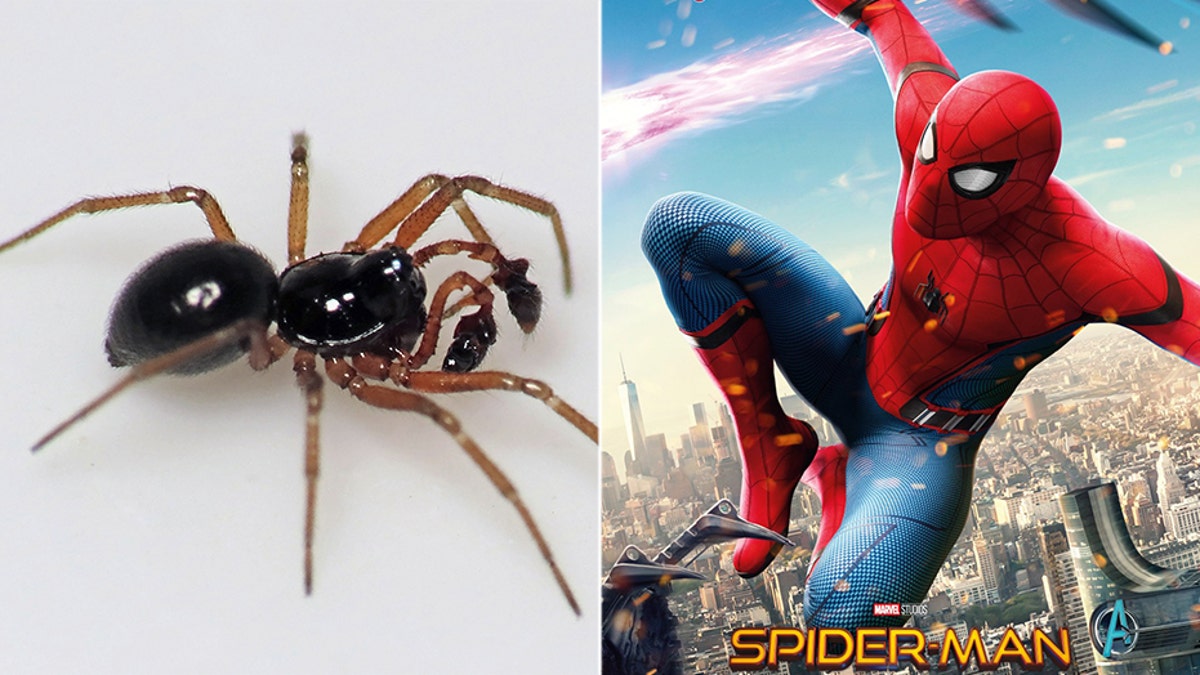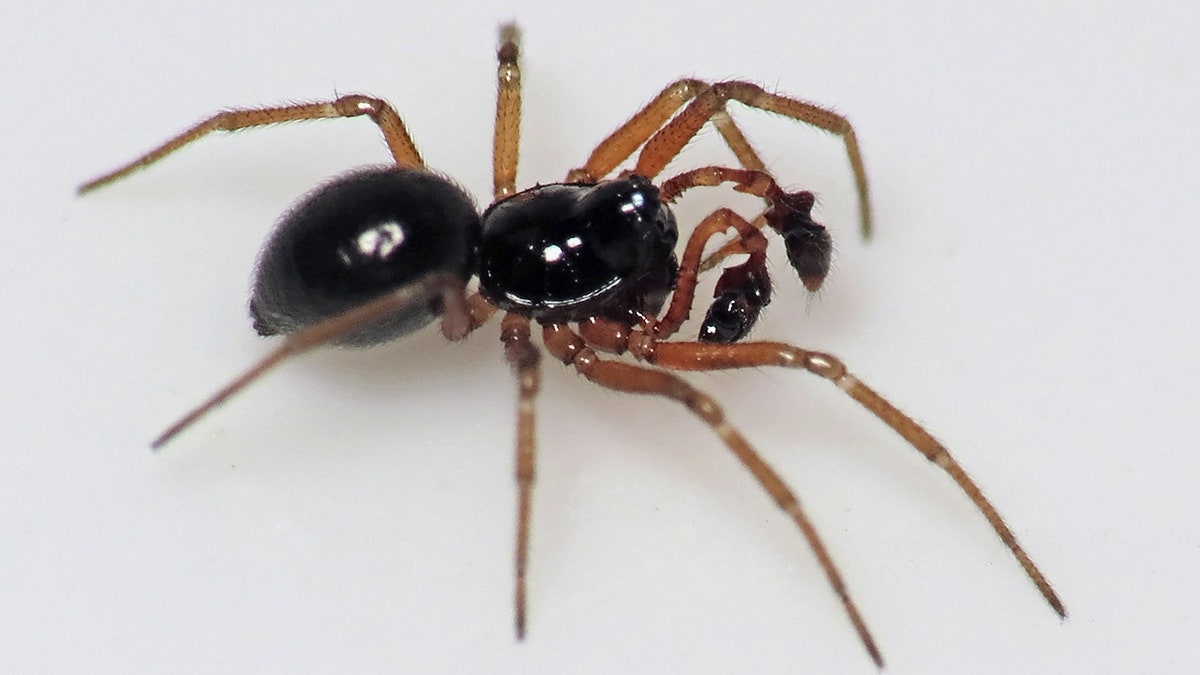
Credit: Martin Cooper/Flickr, Marvel Studios, Columbia Pictures)
Researchers have finally confirmed a theory that the father of evolution, Charles Darwin, believed, but was never able to prove — spiders can fly.
Utilizing an artificial electric field, researchers Erica Morley and Daniel Robert from the University of Bristol demonstrated spiders can use the electric currents and actually "fly," or more accurately stated, "balloon" and become airborne.
"When one thinks of airborne organisms, spiders do not usually come to mind," Morley and Robert wrote in the summary of their paper. "However, these wingless arthropods have been found 4 km up in the sky, dispersing hundreds of kilometers."
'ALIEN' WASPS LAY EGGS INSIDE CATERPILLARS THAT BURST THROUGH THEM

The researchers added "that the presence of a vertical e-field elicits ballooning behavior and takeoff in spiders."
The paper has been published in Current Biology (though not the Daily Bugle).
Morley and Robert captured spiders from the genus Erigone (sadly, there is no Peter Parker genus... yet) and set up an experiment to see if Darwin's theory could be proven — and lo and behold, it worked.
"Aware of the prevailing arguments, Charles Darwin mused over how thermals might provide the forces required for ballooning as he watched hundreds of spiders alight on the [H.M.S.] Beagle on a calm day out at sea," the researchers wrote in the paper.
In his diary, Darwin wrote he had captured spiders that came from a great distance, but wasn't sure how they had gotten to the ship.
“I caught some of the Aeronaut spiders which must have come at least 60 miles,” Darwin wrote, according to Motherboard. “How inexplicable is the cause which induces these small insects, as it now appears in both hemispheres, to undertake their aerial excursions.”
With great power comes great responsibility and these arachnids are no different than a certain web-slinger seen on TV and the silver screen. Rather than shooting a web from their wrists (or in the case of Tom Holland's version, the suit itself), they use the atmospheric potential gradient (APG), which is an electric circuit between Earth and the ionosphere, in order to become airborne and drift away.
The presence of thunderstorms is especially important, as they act like a battery for the APG and keep the charge in the electric field up and running.
When the electric field was turned on, the spiders ballooned; the likely cause of this is spiders' sensory hairs, known as trichobothria, the researchers believe. When it was turned off, the spiders would glide down.
Morley said that it's unclear if "electric fields are required to allow spider ballooning," but added, "we do know... that they are sufficient," while speaking with ScienceAlert.
So the next time you see something flying in the air, don't be surprised if it's your friendly neighborhood spider, man.
Follow Chris Ciaccia on Twitter @Chris_Ciaccia



















